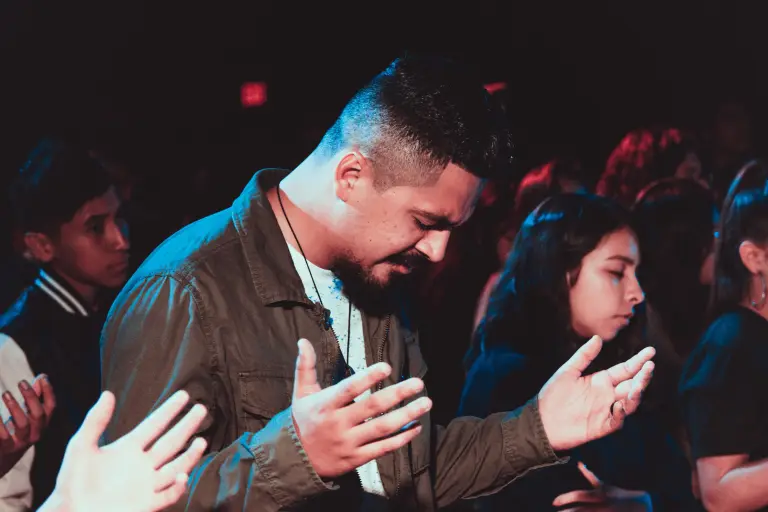This post is part two of Chestnut Mountain Village's three-part "Hope and Homes" blog series focusing on The Church and Foster Care in West Virginia. The different parts of this series will focus on West Virginia's foster care challenges, why the Church should be engaged in the issues, and how churches can impact vulnerable children and families in practical and meaningful ways. In this post, we will delve into why churches throughout West Virginia should be engaged in caring for vulnerable children and families.
In our first series post, we explored how the available statistics on West Virginia foster care and kinship care paint a grim picture. On almost every metric, West Virginia does not compare favorably to national averages regarding foster care. In that post, The Village wrote about the fact that West Virginia Children are Suffering and highlighted some startling data about foster care in West Virginia, including:
According to WV DHHR legislative statistics at the time, roughly 6,700 West Virginia children lived in foster care. This means that, per capita, West Virginia continued to have one of the nation’s highest rates of children in foster care.
Per the State of Babies, for every 1,000 babies born in West Virginia, 25 are removed due to maltreatment. This is more than three times the national average.
Furthermore, it has been reported that West Virginia removes children from their homes at nearly 5 times the national average.

We concluded the previous post with simple questions on how the West Virginia Church should respond to this crisis. Furthermore, we asked questions about the responsibility of the Church.
This post will expand on how churches should respond to the suffering of children in the Mountain State. We will explore God’s heart for vulnerable children; the Gospel-motivated reason “why” churches should care for foster children and families; what discipleship means for how we live; and God’s perfect plan to care for vulnerable children and families in our community.
God’s Heart for Vulnerable Children 1
Looking at the West Virginia foster and kinship care statistics as mere numbers can be easy. However, we must realize that each individual piece of data is a real child created in the image of God. These child image bearers are in vulnerable situations through no fault of the child.
Throughout scripture, God clearly demonstrates His care and compassion for vulnerable children. He is deadly serious about His provision and protection for fatherless children.
“Do not take advantage of the widow or the fatherless. If you do and they cry out to me, I will certainly hear their cry. My anger will be aroused, and I will kill you with the sword; your wives will become widows and your children fatherless.” (Exodus 22:22-24)
“The LORD watches over the foreigner and sustains the fatherless and the widow, but he frustrates the ways of the wicked.” (Psalm 146:9)
“He defends the cause of the fatherless and the widow..” (Deut 10:18a)
“God sets the lonely in families..” (Psalm 68:6a)
Furthermore, God is clear in our responsibility for these children. “Learn to do right; seek justice. Defend the oppressed. Take up the cause of the fatherless; plead the case of the widow.” (Isaiah 1:17)

The Arc of Scripture and the Gospel 2
If one were to dive deeply into scripture, several themes would reverberate throughout it. These themes include God’s creation, provision, judgment, deliverance, righteousness, faithfulness, mercy, and love. If you study humanity in the scriptures, you will see their sinfulness and inadequacy. However, there is one theme that leaps out more than all of those:
God’s never-ending pursuit of us.
In scripture, God initially dwells with humanity. However, we separate ourselves from Him due to the fall. After that, much of scripture tells the story of God guiding us through the Law and then partially dwelling among us in the Tabernacle and Temple. Eventually, in Christ, God was literally and physically with us again. Even better, He now resides in us through the Holy Spirit.
God never stopped pursuing us despite our broken and desperate situations. He consistently sought and moved toward us. He even went to the point of being broken and crucified so that we would not have to pay the price for our sins. He stepped out of Glory and His comfort for us. When He saw our need, He came after us.
“..rather, he made himself nothing by taking the very nature of a servant, being made in human likeness.” (Philippians 2:7)
“But when the set time had fully come, God sent his Son, born of a woman, born under the law, to redeem those under the law, that we might receive adoption to sonship. Because you are his sons, God sent the Spirit of his Son into our hearts, the Spirit who calls out, ‘Abba, Father.’ So you are no longer a slave, but God’s child; and since you are his child, God has made you also an heir.” (Galatians 4:4-7)
In much of our American culture, we are taught (directly or covertly) that we should pursue comfort and avoid discomfort. We learn that we should run from hard and broken places and people to pursue things that are not uncomfortable. Caring for broken and vulnerable children and families is messy, heartbreaking, and challenging. Most of us avoid such things. Yet, our God does not move away from the vulnerable. He provides for and protects them. He does not move away from the broken and desperate. He relentlessly pursues them.
In light of what God has done, what should we do for vulnerable children and families who come from hard and broken places?

Being and Making Disciples 3
In first-century Jerusalem, the most outstanding pupils of the Jewish text sought to study with a rabbi. These students were called talmidim (talmid,s). In Hebrew, this is translated as disciple. There is much more to a talmid than what we call a student or pupil.
A pupil wants to know what the teacher knows in order to get a good grade, complete the class or the degree, or out of respect for the teacher.
A talmid wants to be like the teacher, that is to become what the rabbi is.
The talmidim were passionately devoted to their rabbi and noted everything he spoke or did. As the rabbi lived and taught his understanding of the text, his disciples watched and imitated in order to become just like him.
In due course, these talmidim would become teachers themselves and pass on a lifestyle to their own talmidim.
Evidence of the idea that the followers of Christ were to strive to become like him is unmistakable throughout the New Testament.
“Whoever says he abides in Him ought to walk in the same way in which He walked.” (1 John 2:6)
“Be imitators of me, as I am of Christ.” (1 Corinthians 11:1)
“For to this you have been called, because Christ also suffered for you, leaving you an example, so that you might follow in his steps.” (1 Peter 2:21)
“If you love me, you will keep my commandments.” (John 14:15)
“This is my commandment, that you love one another as I have loved you.” (John 15:12)
Eventually, the tamidim of Christ reached a point where they were to leave the rabbi and create new disciples (talmidim). We know this as The Great Commission. In first-century Jerusalem, the words of The Great Commission would have been a clear directive that the disciples had reached a point where they were directed to go and make new talmidim.
”Then Jesus came to them and said, “All authority in heaven and on earth has been given to me. Therefore, go and make disciples of all nations, baptizing them in the name of the Father and of the Son and of the Holy Spirit, and teaching them to obey everything I have commanded you.” (Matthew 28:16-20)
The very nature of discipleship demands that we work to be like Christ and teach others to do the same. Discipleship is not merely Bible study or learning information. Discipleship is living like He lived and doing what He did. However, our culture pushes us to be comfortable and run from complicated, broken people and places.
In light of the suffering children in West Virginia, the heart of God for these children, the example of Christ in His pursuit of us, and our desire to be like Him as true disciples – what then should the Church do?

God’s Plan for the Church 2
One of the most commonly quoted verses related to how the Church should care for the most vulnerable in our world is James 1:27.
“Pure and genuine religion in the sight of God the Father means caring for orphans and widows in their distress and refusing to let the world corrupt you.” (James 1:27)
Most of us think of this verse as a command that we should help the less fortunate. However, if one reads it closely, something becomes apparent. This verse is not a command. It is merely an observation. In other words, it was simply expected that the outward expression of our inward belief in Jesus Christ (i.e., religion) would naturally manifest itself in caring for those who are suffering and broken. We were not told to care for orphans, but it is simply expected.
Even with the James 1:27 expectation, most of us will never open our homes to foster or adopt children. The truth is that most of us should NOT become foster parents or adopt children. Such activities are not part of our spiritual gifting and do not align with how God has created us. The Church is a place where each person has unique gifts, and all of those gifts work together for God’s Kingdom. The Church was not designed for everyone to do everything, but as a body that works together.
“For just as we have many members in one body and all the members do not have the same function, so we, who are many, are one body in Christ, and individually members one of another.” (Romans 12:4-5)
“For even as the body is one and yet has many members, and all the members of the body, though they are many, are one body, so also is Christ.” (1 Corinthians 12:12)

So, it is expected that God’s people care for the vulnerable, but we do not all have the same function. This means that even though we all may not foster or adopt vulnerable children, we can and should do something. Whether that is simply helping a fostering family with practical chores, mentoring a child, giving resources, praying, or 100 other ways to help – there is something that we can all do. Not every way we can help has to be an extreme task, but when compiled together, it is all significant.
When someone does open their home and heart to children in care, we all can do something to help. Fifty percent (50%) of those who become foster parents quit within the first year of fostering. In addition, around eighty percent (80%) stop fostering within two years. However, when fostering families are surrounded by a loving, structured, and supportive community – 90% of them continue fostering into the second year. When foster families keep fostering longer and stronger, children’s lives are improved.
So, what is a loving, structured, and supportive community that seems necessary to keep families fostering? It is a group of people who all have different roles but work together to care for vulnerable children and families. If that sounds familiar – it is because it is the exact design of the Church.
In other words, when children and families are suffering, the solution that God designed is the Church. The Church is the answer.
God has a heart for vulnerable children and families, Christ suffered and was broken for people from complicated and difficult places, and His disciples should strive to be like Him. The Church is designed to alleviate suffering and care for the most vulnerable.
What will you do? Contact The Village and learn how your Church can help.

1 Significant portions of this section are attributed to and adapted from works by Pastor Josh Rhodes.
2 Significant portions of this section are attributed to and adapted from works by author and speaker, Jason Johnson.
3 Significant portions of this section are attributed to and adapted from “That the World May Know” ministries.
